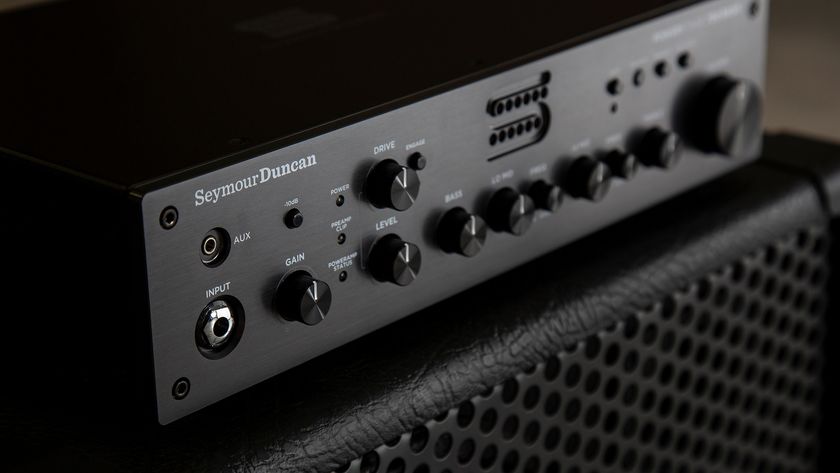Lost Symphony’s Benny Goodman and Nuno Bettencourt on the making of an all-star guitar hero album
With Bettencourt, Marty Friedman, Alex Skolnick and Cradle of Filth’s Richard Shaw onboard, Goodman went to town on one of the most cinematic and trippy guitar albums in recent years
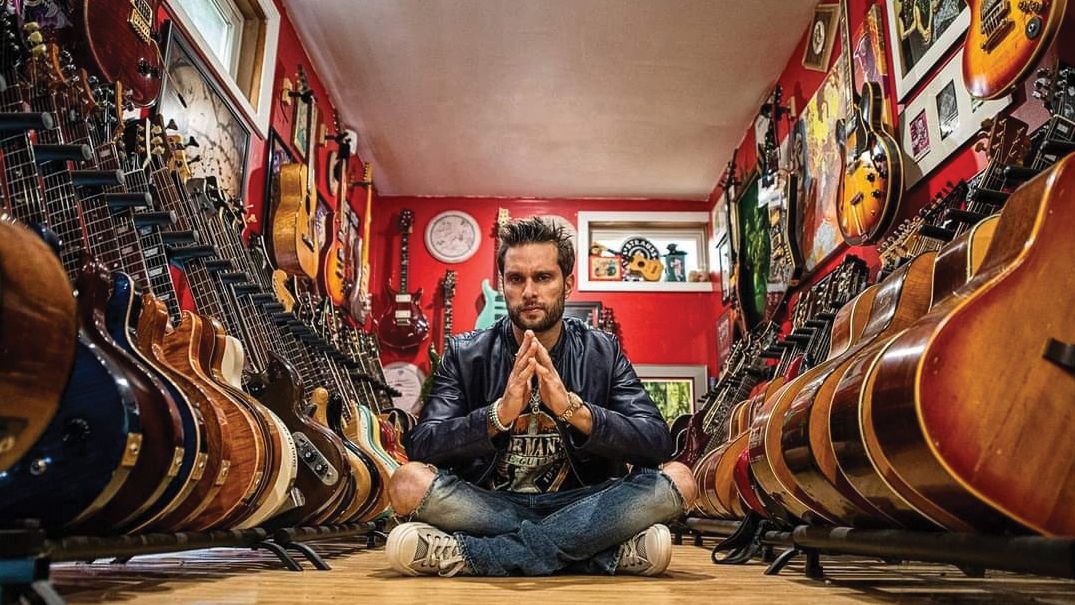
“I have about 185 guitars here with me at home... I’m a total tone nerd,” begins Lost Symphony guitarist/keyboardist Benny Goodman, who started the project back in 2015. Taking GW on a quick tour of what feels more like a museum than someone’s home studio, with all kinds of rare Gibsons, Paul Reed Smiths and Fenders lined up across endless walls, he’s clearly invested a lot of time, effort and money into what he calls – and we have no doubt – his biggest passion.
This is also evident from the music he’s been making with Lost Symphony. On their three studio albums to date, the group have enlisted famous friends to guest on nearly every track, harnessing the mind-boggling talents of Bumblefoot and Satchel or Angel Vivaldi and Jeff Loomis for some suitably epic musical expeditions.
That said, Take Another Piece – the lead single from 2021’s Chapter III – could very well be the most head-turning collaboration of them all, with Nuno Bettencourt, Marty Friedman, Alex Skolnick and Cradle of Filth’s Richard Shaw signing up for a quadruple guitar assault to propel their classical overtures.
Mixing elements of film score, progressive metal and “fuckin’ Disney,” Goodman – who is joined by his brother Brian, guitarists Kelly Kereliuk and Cory Paza, drummer Paul Lourenco and violinist Siobhán Cronin – is on a mission to melt expectations and trail far beyond rock’s usual confines.
“With instrumental stuff, you’re writing more than music to wank over,” he says. “You have to compose. Go back to classical music, listen to it and then steal from it. That’s what Yngwie did, so that’s what I do. Franz Liszt is how I learned how to use all that diminished stuff. He would change the feel from happy to sad to angry with every chord, maybe every beat! Listening to that gets you out of the pentatonic and 4/4 boxes.
I don’t want any politics or religion in my music. I just want the devil, fire and brimstone
Benny Goodman
“Go watch Fantasia and really pay attention to the music. It was Walt Disney’s way of giving us an acid trip. That stuff will help you start thinking differently. Even listening to Dream Theater will help you hear things beyond metal. If you want to play like that, maybe listen to what John Petrucci or Malmsteen were listening to, from Paganini and Schubert to Chopin and Vivaldi. Those guys were pretty metal too!”
How did you come up with the idea for a band like Lost Symphony?
Get The Pick Newsletter
All the latest guitar news, interviews, lessons, reviews, deals and more, direct to your inbox!
“I’m a DJ that plays stuff like Earth, Wind & Fire as well as EDM. Sometimes I play classical piano for a bunch of elitists and I also record beats for rap people. I decided to make some music just for me. I always loved the song November Rain. I’d always fast-forward to the solo Slash plays when he’s on the piano in the video.
“The same goes for Rush; I always liked La Villa Strangiato, when Geddy Lee decided he’s just a bass player. I love Dream Theater, but it gets a little much for me after a while. So I was thinking, how could I mix all of these things? Oh, and I’m a Jew, so Trans-Siberian Orchestra is awesome, but I don’t get the Jesus part – leave him out of it.
“I don’t want any politics or religion in my music. I just want the devil, fire and brimstone. There was a need in my soul to write these songs, which came from loving Hans Zimmer and John Williams as much as Malmsteen, Ozzy and Queen.”
You clearly enjoy playing guitar, but you seem to prefer hiring other guitarists.
“Starting this project, I realized I’m not a good enough guitarist. I needed to find people better than me to complete my vision, almost like the Frank Zappa role in this. I’m not comparing myself to Frank Zappa; I just mean being a maniacal overlord! So I started asking online, who is the best guitarist out there that I’ve never heard of?
“Loads of people kept saying Kelly Kereliuk, who became the guitarist in this band. I knew I had found the Jedi, so I asked if there were any other Jedis like him. He came up with this guy called Conrad Simon who sent me this overture. It was the most mind-melting shit I’d ever heard. That’s how Leave Well Enough Alone started – written by Conrad, Kelly, me and my brother. It was all done on Facebook Chat in 2015. We were the Covid band before Covid!”
Oli Herbert from All That Remains was also involved early on. The final track on the album, My Last Goodbye, features one of his final recordings.
“When he passed [in 2018], we were just releasing our first record, and his death came as a total surprise. A friend got some of our tracks over to him and he really liked what he heard. He’d stay at my house for weeks straight, recording all night, putting Alex Skolnick-style solos on crazy pop songs. I was lucky to be around one of the greatest people at the right time.
“I could Frankenstein 50 more solos from the guy – we recorded so much – and I get goosebumps thinking about what Oli played on My Last Goodbye. But I feel sad that I’ll never hear him laugh or tell me to stop fucking around. It’s the biggest bummer, dude.”
You also have half of Megadeth’s Rust in Peace-era lineup on the new album’s two opening tracks.
“Marty Friedman was the first guitarist we got in that was like, ‘Oh my god!’ levels of famous. I had a poster of him and Megadeth on my wall; he stared at me my entire youth. He ended up sending us multiple takes of different songs, telling us to use whatever we wanted and even comp if we needed to.
“A lot of other players are like, ‘You must only use this take as is, put nothing on it and fuck you!’ Marty didn’t care; he gave us the DI and said do whatever. That’s why those songs ended up being so long. I felt like I needed to use all parts of the buffalo. He sent nothing bad, and even made his own completely different sections, so I actually had to rewrite my own songs! [Laughs] He’s the most polite person, even when he’s telling you the final mix isn’t good enough. He doesn’t yell, but in my head he does! And he was right.”
Getting Nuno Bettencourt involved was a stroke of genius, too, given how rare it is for him to collaborate like this.
“Nuno is the greatest of all time for me. It’s funny, but he and Marty are total opposites. Marty is passive-aggressive; he’ll say, ‘You don’t have to do what I tell you, but it might not be awesome!’ Nuno is from Boston, so he tells you how it is. Whatever is going on in his mind, he says it. I’ve been begging him to work with us for years, and I even asked [Extreme singer] Gary Cherone, who I loosely know.
“I asked him how to get Nuno on a song and he said, 'When you figure it out, let me know so I can tell the rest of Extreme!' I knew in my mind if I put Marty Friedman and Nuno Bettencourt on the same track – two guys who are known as shredders that hate the word 'shred' and don’t want to be associated with shred, but shred better than everybody – it would be special. And then there’s Alex Skolnick and Richard Shaw. It was like getting pandas in a cage to play together at first.”
What gear did you use to track your parts on the album?
“I used some '80s PRS guitars, and there are some Les Pauls in there as well. I probably used 25 to 30 guitars in total. For amps, the VHT Pittbull Ultra Lead is my favorite, and we were mixing different things until I got a Kemper. I remember seeing one and thinking there’s no way it could sound as good.
“My friend called up a Michael Britt 5150 patch – I think they’re some of the greatest amps ever made. I actually own a few. And I couldn’t make any of my 5150s sound as good as that Kemper profile. I got really angry about it, so I decided to become a Kemper guy. They remove the idiocy and craziness of having to change tubes, choose cabs and set up mics.”
More than notes: Nuno Bettencourt on his Lost Symphony experience

Nuno Bettencourt talks us through his guest parts on Take Another Piece
“A lot of it was improvised. Even when we shot the video, I probably played everything in the wrong place. I didn’t write it down and couldn’t remember exactly what I did, so I just faked my way through it. [Laughs] I don’t do these things a lot, especially instrumental projects.
“The instrumental stuff from me has been very limited and generally just on Extreme albums. But Benny put a gun to my head and forced me to do it. I don’t want to call it a neoclassical track, but it does have those orchestral elements. I didn’t even know any of the other players on this track; I knew who they were but I didn’t know them personally.
“It was really interesting to hear what I was doing going into someone else’s completely different approach. You can hear different paintings in the same song, unique interpretations of ultimately the same sort of message.
“I guess what I’m doing is all from the Eddie Van Halen school of playing. I don’t really orchestrate my leads. I just let the thing run and play to it. When I listen back, if I like 100 percent, then I'll keep it. If I like 20 percent, I’ll take it somewhere else from there.
“So it might be built in that sense, but it’s more of a magical thing that comes from jamming along to the music and seeing where it takes you freely, without too much thought. I’ve always been like that; I tend to learn things by ear instantly and just nail it.
“That’s what works for me, rather than thinking too much. I always want my leads to be emotional. Even if you like the technical stuff, I want you to be distracted by the emotion first. That’s the thing that makes you want to hear it again. It’s how all my favorite guitar players made me feel.”
- Chapter III is out now via XOFF.
Amit has been writing for titles like Total Guitar, MusicRadar and Guitar World for over a decade and counts Richie Kotzen, Guthrie Govan and Jeff Beck among his primary influences as a guitar player. He's worked for magazines like Kerrang!, Metal Hammer, Classic Rock, Prog, Record Collector, Planet Rock, Rhythm and Bass Player, as well as newspapers like Metro and The Independent, interviewing everyone from Ozzy Osbourne and Lemmy to Slash and Jimmy Page, and once even traded solos with a member of Slayer on a track released internationally. As a session guitarist, he's played alongside members of Judas Priest and Uriah Heep in London ensemble Metalworks, as well as handled lead guitars for legends like Glen Matlock (Sex Pistols, The Faces) and Stu Hamm (Steve Vai, Joe Satriani, G3).


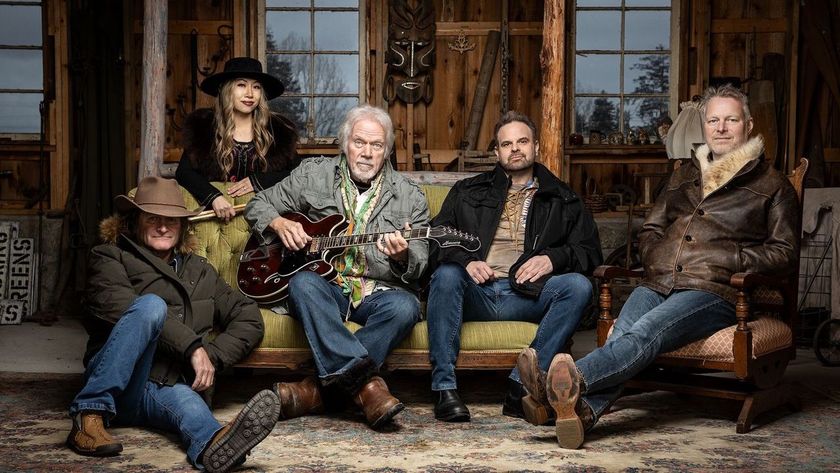
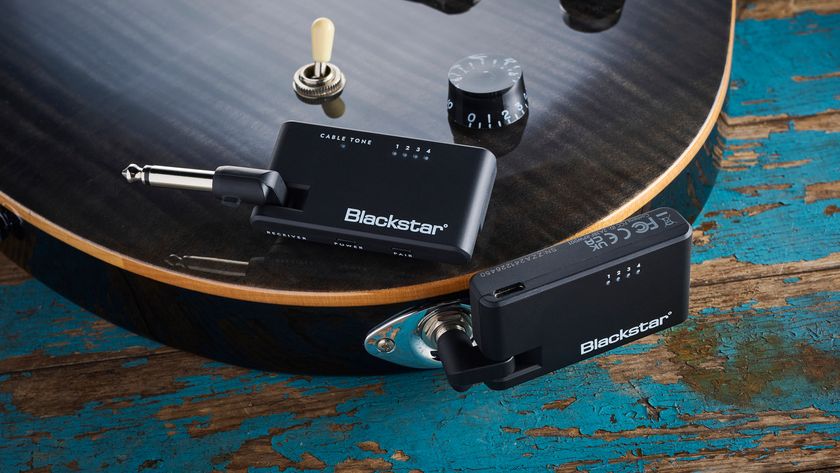
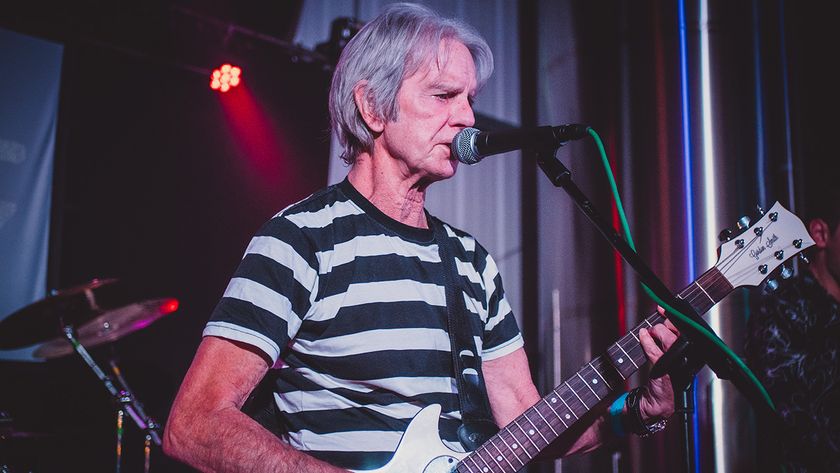
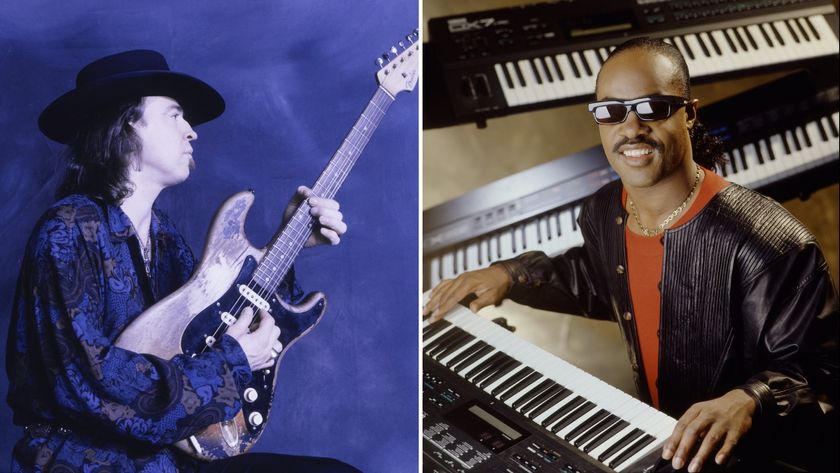
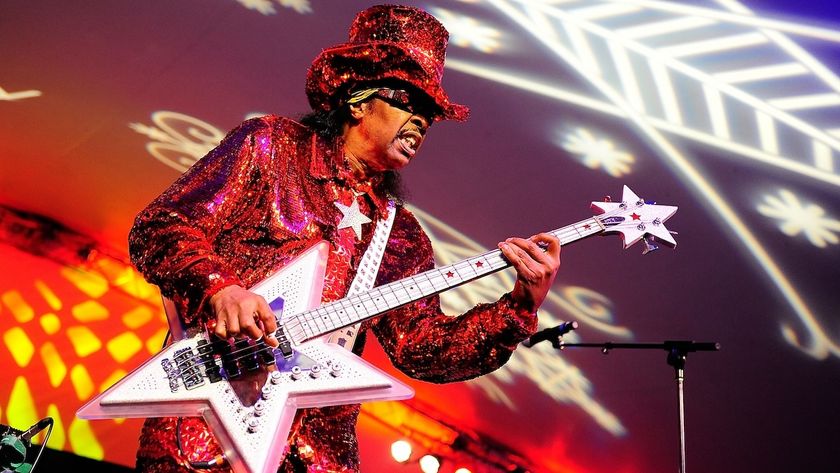


![[L-R] George Harrison, Aashish Khan and John Barham collaborate in the studio](https://cdn.mos.cms.futurecdn.net/VANJajEM56nLiJATg4P5Po-840-80.jpg)
